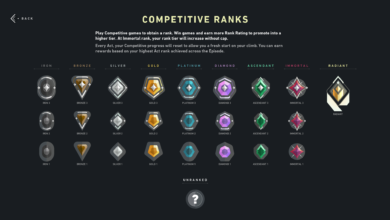
Introduction to Canvas Alpine
Canvas Alpine is a cutting-edge framework designed to facilitate the creation of dynamic, interactive web applications by harnessing the capabilities of both the Canvas and Alpine.js frameworks. This innovative toolkit empowers developers to build robust, visually engaging user experiences that are not only efficient but also highly responsive. The intersection of these two frameworks offers a unique advantage, allowing web applications to process visual elements seamlessly while maintaining a lightweight codebase.
In today’s fast-paced web development environment, the demand for interactive and visually appealing applications continues to grow. Canvas-based applications have become increasingly popular due to their ability to render graphics in real-time, which is particularly beneficial in contexts such as gaming, data visualization, and engaging user interfaces. Canvas Alpine leverages this growing trend by integrating the flexibility of the Canvas API with the declarative nature of Alpine.js, resulting in a powerful combination that enhances both performance and user engagement.
The purpose of Canvas Alpine is to simplify the process of creating complex interactive elements by providing a structured framework. By integrating with Alpine.js, it allows developers to utilize data binding techniques, reactive programming, and simpler state management practices. This integration means that developers can focus more on the creative aspect of their applications rather than getting bogged down by intricate coding challenges. As a result, developers are better equipped to deliver high-quality web applications faster and with more features.
Ultimately, Canvas Alpine represents a noteworthy advancement in the realms of web development. It not only streamlines the workflow for developers but also delivers enhanced interactive experiences for users, paving the way for future innovations in canvas-based applications. The fusion of Canvas capabilities with the simplicity of Alpine.js exemplifies how modern frameworks can together enhance both performance and usability in the digital landscape.
Benefits of Using Canvas Alpine
In recent years, the adoption of canvas-based frameworks has gained substantial traction, particularly in the realm of web development. The Canvas Alpine framework stands out due to its distinct advantages that cater to both developers and end-users. One of the most significant benefits of utilizing Canvas Alpine is its improved rendering capabilities. By leveraging the canvas element of HTML5, it circumvents the limitations of standard DOM manipulation, enabling seamless rendering of complex graphics and animations. This not only enhances performance but also elevates the overall visual appeal of web applications.
Furthermore, Canvas Alpine offers enhanced animation features that allow developers to create visually engaging experiences with relative ease. The framework supports a range of animation techniques that can be integrated without the overhead often associated with traditional JavaScript libraries. By utilizing the canvas element, animations run smoother and more efficiently, resulting in a more enjoyable user experience. The flexibility of Canvas Alpine allows for the creation of dynamic transitions that can engage users effectively, enhancing interactivity on websites and applications.
Another noteworthy advantage of Canvas Alpine is its lightweight framework structure. Unlike heavier frameworks that can slow down a webpage, Canvas Alpine is designed for quick loading times. This lightweight nature facilitates faster interaction with web pages, improving overall performance without sacrificing functionality. It enables developers to create performance-intensive applications without the burden of intricate coding practices or increased load times. Thus, Canvas Alpine supports rich user experiences while maintaining elegant and efficient methodologies, proving to be an invaluable asset to modern web development.
Setting Up Canvas Alpine
To effectively utilize Canvas Alpine for your project, it is essential to understand the prerequisites and installation steps necessary for a successful setup. Canvas Alpine is designed to enhance transitions in web applications using the robust features of both canvas elements and Alpine.js. Before proceeding, ensure that your development environment meets the requirements for both technologies.
Firstly, you need to have a basic knowledge of HTML, CSS, and JavaScript as the foundation of your project will be built upon these languages. Additionally, you will need a code editor to write and manage your files; popular options include Visual Studio Code, Atom, or Sublime Text. Make sure your development environment supports the latest versions of these languages, as this will ensure compatibility with Canvas Alpine functionalities.
Next, you must install the necessary libraries. You can integrate Canvas Alpine into your project by adding the Canvas library and Alpine.js via CDN links in your HTML file. This can be accomplished by inserting the following lines within the <head> section of your document:
<script src="https://cdn.jsdelivr.net/npm/alpinejs" defer></script><script src="https://cdn.jsdelivr.net/npm/canvas-alpine"></script>After including the required libraries, you are ready to configure your project settings. Create a structure for your project that includes a main HTML file, a CSS file for styles, and a JavaScript file where you will implement the Canvas Alpine’s capabilities. Within your JavaScript file, instantiate an Alpine component that will manage your transitions.
For added assistance, refer to the official documentation for both Canvas and Alpine.js, which contain extensive resources and examples to guide you through advanced configurations and functionalities. Once your environment is set up, you will be prepared to explore the rich features that Canvas Alpine has to offer, creating dynamic and engaging transitions for your web applications.
Creating Your First Canvas Alpine Project
To embark on your journey with Canvas Alpine, begin by setting up your development environment. Ensure you have a text editor, such as Visual Studio Code or Sublime Text, installed on your computer. You will also need to have the latest version of Node.js and npm (Node package manager) set up, which can be downloaded from the official Node.js website. Once these prerequisites are in place, you are ready to create your first project.
Start by creating a new directory for your project. Open your terminal and enter the following command:
mkdir MyCanvasAlpineProject && cd MyCanvasAlpineProjectNext, initialize a new npm project by executing:
npm init -yThis command generates a package.json file that will keep track of your project’s dependencies. To add Canvas Alpine to your project, run:
npm install canvas-alpineWith the installation complete, you can proceed to create your main JavaScript file. For simplicity, name it app.js. In this file, you will import Canvas Alpine and set up a basic canvas context. Here’s a simple code snippet to get started:
This command executes your script. You can expand this project further by exploring different shapes and animations that Canvas Alpine offers. As you experiment, you will gain confidence in utilizing its features to build more complex animations and transitions.
Understanding the Core Components
Canvas Alpine is a sophisticated canvas-based framework designed specifically for creating dynamic and interactive transitions in web applications. Its architecture is built around several core components that work in harmony to facilitate smooth animations and visually appealing designs. Understanding these components is crucial for leveraging the full potential of Canvas Alpine.
The primary elements of this framework include layers, shapes, transitions, and event handling. Layers serve as distinct planes within the canvas environment, allowing developers to manage the visual hierarchy of various elements effectively. By stacking layers, one can create complex scenes where certain objects can overlap or remain hidden behind others. This layering system is pivotal in crafting fluid animations, as it enables specific objects to transition independently without interfering with others.
Shapes are another fundamental component that can be manipulated and animated within the Canvas Alpine framework. These shapes can be basic geometric figures or custom designs, and they are essential in building the visual elements that engage users. The framework provides a plethora of methods for defining, transforming, and animating these shapes, resulting in rich user experiences that can adapt to various scenarios.
Transitions are the heartbeat of Canvas Alpine, allowing for the seamless movement and transformation of shapes as they respond to user interactions. By defining different transition effects, developers can add depth and motion to their designs, capturing the user’s attention and enhancing interactivity. A well-crafted transition can dramatically improve usability, making the interaction more intuitive and enjoyable.
Finally, event handling in Canvas Alpine provides a way to respond to user input, such as clicks or hovers. This component is crucial for creating interactive experiences, as it enables dynamic responses to user actions, enhancing engagement within applications. Understanding how these core components work together lays the groundwork for more intricate designs and powerful transitions within the Canvas Alpine framework.
Advanced Techniques and Features
Canvas Alpine presents a multitude of advanced techniques and features that can significantly enhance your projects. One of the principal advantages of using this canvas-based framework is the ability to create complex animations that are seamless and engaging. By harnessing the full potential of the Canvas API alongside Alpine.js capabilities, developers can craft intricate animations that amplify user interaction. Utilizing tweening libraries can further assist in smooth transitions, making animations appear more polished and professional.
Another effective technique is layering multiple canvases to create a more dynamic scene. This can be accomplished by stacking different layers of canvases on top of each other, each responsible for rendering separate components of your project. For instance, one canvas could handle the background while another focuses on foreground elements. This separation not only improves the organization of the code but also allows developers to manage complex scenes without sacrificing performance. Techniques such as this can also lead to a richer user experience as the visual depth enhances storytelling within the application.
Performance optimization remains a crucial aspect when working with Canvas Alpine. To ensure smooth performance, especially in projects involving numerous animations and layers, one must implement various strategies. For instance, reducing the frequency of redrawing the canvas can significantly accelerate rendering times. This can be achieved through techniques such as dirty rectangles, where only the portions of the canvas that change are redrawn, rather than the entire surface. Additionally, leveraging requestAnimationFrame can help maintain a more consistent frame rate, thereby providing a more fluid visual experience for users.
In summary, by exploring these advanced techniques in Canvas Alpine, developers can elevate their projects through enhanced animations, effective layering, and optimized performance, maximizing the framework’s potential.
Common Issues and Troubleshooting
When working with Canvas Alpine, developers may encounter various challenges that can hinder their progress. Understanding these common issues is essential for ensuring a smooth development experience. One prevalent problem is the inconsistent performance when rendering complex graphics, often caused by high computational demands. To address this, developers should consider simplifying the design elements or utilizing optimization techniques such as reducing the number of layers or leveraging lightweight assets.
Another frequent issue involves responsiveness; sometimes, the canvas does not adapt well to different screen sizes or resolutions. This can be attributed to improper scaling of canvas elements. A best practice to mitigate this is to implement responsive design techniques, including using viewport units and recalibrating the canvas dimensions dynamically based on the user’s device. Additionally, thorough testing across various devices is crucial to identify and resolve specific display issues.
Debugging can also present challenges when integrating Canvas Alpine into existing projects. Common errors such as incorrect context calls or failure to update the state appropriately may arise. To troubleshoot these problems effectively, developers should utilize browser-based development tools that allow for real-time inspection of the canvas element. This practice not only aids in pinpointing errors but also shines a light on performance bottlenecks by providing metrics on rendering times and CPU usage.
Furthermore, leveraging community resources, such as forums and documentation, can be incredibly beneficial. Engaging with fellow developers who are also utilizing Canvas Alpine may yield additional tips and insights on overcoming common hurdles. By employing these strategies, developers can streamline their workflow and enhance their overall Canvas Alpine experiences, ensuring their projects remain efficient and effective.
Real-World Applications of Canvas Alpine
Canvas Alpine has emerged as a versatile framework utilized in a wide range of industries. This canvas-based technology serves numerous applications, facilitating the development of dynamic and interactive user experiences. One prominent example is its use in the education sector, where e-learning platforms leverage Canvas Alpine to create engaging content. Interactive quizzes, educational games, and visual aids are just a few applications that enhance learners’ experiences, making education more immersive and effective.
Moreover, the gaming industry has adopted Canvas Alpine for creating visually appealing and engaging game interfaces. Developers utilize the framework to design smooth transitions and animations that captivate users. Its ability to manage graphics and animations seamlessly makes Canvas Alpine a preferred choice for game designers seeking to elevate their games’ interactivity without compromising performance. Popular titles have showcased the benefits of using this technology, demonstrating how it contributes to user engagement and satisfaction.
Furthermore, the advertising sector has recognized the potential of Canvas Alpine in crafting interactive advertisements. Brands employ this framework to engage potential customers through visually stunning ads that incorporate animations and user interactions. By utilizing Canvas Alpine, marketers can create ads that are not only aesthetically pleasing but also effective at driving user engagement, thereby increasing conversion rates.
The healthcare industry has also begun to explore applications of Canvas Alpine, particularly for patient management systems. By employing this framework, healthcare providers can create intuitive interfaces for their applications, ensuring ease of use for both patients and healthcare professionals. Features such as interactive data visualization tools and easy navigation within patient records demonstrate how Canvas Alpine can enhance efficiency in healthcare settings.
In conclusion, the applications of Canvas Alpine are varied and abundant across multiple industries. By providing the tools to develop rich, interactive experiences, this framework is shaping the future of web applications, ensuring they meet the evolving needs of users while enhancing engagement and effectiveness.
Future of Canvas Alpine Development
The future of Canvas Alpine holds great promise as a canvas-based framework tailored specifically for Alpine transitions. Since its inception, Canvas Alpine has rapidly gained traction among web developers, primarily due to its lightweight architecture and flexibility. Looking ahead, several potential updates can enhance its functionality while optimizing user experiences. These updates may include improved rendering capabilities, enhanced support for interactive elements, and more customizable UI components that align with modern web standards.
Community involvement is vital for the ongoing development of Canvas Alpine. As developers from diverse backgrounds contribute to its growth, the framework is likely to benefit from a wider perspective on usability and feature requirements. Forums, GitHub discussions, and developer meetups already serve as effective platforms for collaboration. The growing community may lead to a more robust plugin ecosystem, making it easier for developers to address different needs in their projects. Encouraging new contributors through tutorials and workshops will further facilitate an inclusive environment that nurtures innovation within the Canvas Alpine space.
In addition, keeping pace with emerging web development trends is essential for the continued relevance of Canvas Alpine. The integration of artificial intelligence and machine learning into web workflows is rapidly reshaping the landscape. Future versions of Canvas Alpine may harness these technologies to automate certain functionalities, thereby enhancing efficiency. Moreover, as the demand for responsive and mobile-friendly interfaces escalates, it will be imperative for the framework to adapt accordingly. Insights from industry experts suggest that a focus on accessibility and cross-browser compatibility will also shape the evolution of Canvas Alpine.
With the ongoing contributions from its growing community and an eye toward future technologies, Canvas Alpine is poised to evolve in ways that will resonate with developers and end-users alike.
ALso read on dailytimenews.co.uk



